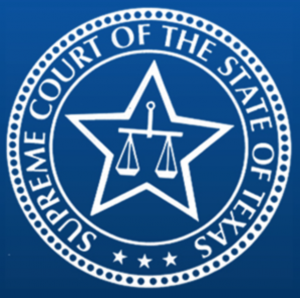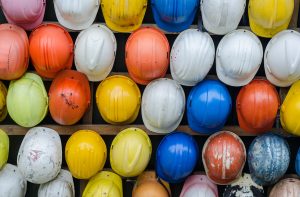 A family initiated a Texas wrongful death lawsuit against SpaceX following a car accident outside its launch site. According to a recent news report, the tragic accident occurred when the family left a campsite early after officials called for an evacuation because of rising tides. While driving home, the family was involved in a harrowing accident with a large semi-truck that was stopped in front of SpaceX. The accident took the life of the 35-year-old husband and father and resulted in serious injuries to the man’s wife and three young children. An autopsy report states that the man died from “blunt force” trauma due to the motor vehicle collision.
A family initiated a Texas wrongful death lawsuit against SpaceX following a car accident outside its launch site. According to a recent news report, the tragic accident occurred when the family left a campsite early after officials called for an evacuation because of rising tides. While driving home, the family was involved in a harrowing accident with a large semi-truck that was stopped in front of SpaceX. The accident took the life of the 35-year-old husband and father and resulted in serious injuries to the man’s wife and three young children. An autopsy report states that the man died from “blunt force” trauma due to the motor vehicle collision.
The family filed a wrongful death lawsuit alleging that SpaceX was grossly negligent because they failed to provide adequate lighting and warnings around their facility. Further, their claim contends that the spacecraft and rocket manufacturer did not maintain procedures to direct stopped or obstructive delivery vehicles to avoid these types of accidents. Moreover, the family maintains that the company, and not the local government, maintains responsibility for addressing the increased traffic that their company begets. The family argues that the company prioritized quick completion of their facility rather than the safety of those traveling on the dark and narrow roadway. In response, the company purports that the family, not the company, maintains responsibility for the collision. The company’s attorney stated that the man failed to use necessary “care and caution,” as is expected of a reasonably ordinary person when navigating the highway.
This case presents many issues regarding who maintains responsibility for maintaining Texas roads. There are many reasons that Texas roadways fall into disrepair and become dangerous hazards to motorists. While city planning and infrastructure development may address the party responsible for designing a dangerous roadway, it still leaves the question of who is responsible for road maintenance. In these situations, many parties may hold responsibility for repairing and modifying roadways to meet current demands. A federal, state or local government may all hold some responsibility for a road’s upkeep. However, the question only gets more complex when a large business drastically impacts a roadway. In these cases, fault and liability may become more convoluted. It is crucial that those who suffer injuries on a Texas roadway contact an attorney to discuss their rights and remedies.
 Texas Injury Lawyers Blog
Texas Injury Lawyers Blog








 The Supreme Court of Texas issued a
The Supreme Court of Texas issued a  May 9, 2021: KILGORE, Texas (KETK) – An East Texas toddler who was fighting for his life
May 9, 2021: KILGORE, Texas (KETK) – An East Texas toddler who was fighting for his life  The law provides that Texas insurance companies owe several duties to their policyholders. These procedural and substantive rules aim to ensure that insurance companies settle claims fairly and promptly. Insurance companies that fail to abide by these standards may be liable under Texas’ insurance bad faith and breach of contract laws.
The law provides that Texas insurance companies owe several duties to their policyholders. These procedural and substantive rules aim to ensure that insurance companies settle claims fairly and promptly. Insurance companies that fail to abide by these standards may be liable under Texas’ insurance bad faith and breach of contract laws. Self-driving, or autonomous cars, are revolutionizing the way the public looks at travel and car ownership. These vehicles turn active drivers into passive passengers, allowing motorists to rely on the car’s advanced computerized system to navigate the roads and avoid collisions. However, these cars may result in a serious Texas car accident, as the new technology is still being refined.
Self-driving, or autonomous cars, are revolutionizing the way the public looks at travel and car ownership. These vehicles turn active drivers into passive passengers, allowing motorists to rely on the car’s advanced computerized system to navigate the roads and avoid collisions. However, these cars may result in a serious Texas car accident, as the new technology is still being refined. Vaccines are one of the most effective ways to prevent the spread of infectious diseases throughout the world. The overwhelming majority of people who receive vaccines do not experience serious problems, and the benefits greatly outweigh the threat of risk. However, similar to the risks associated with natural supplements and other pharmaceuticals, some vaccine recipients may suffer adverse reactions. Depending on the nature and circumstance of the injury, victims may file a Texas medical malpractice or pharmaceutical error lawsuit. Further, the National Vaccine Injury Compensation Program (VICP) provides compensation to individuals who have suffered injuries from certain vaccines.
Vaccines are one of the most effective ways to prevent the spread of infectious diseases throughout the world. The overwhelming majority of people who receive vaccines do not experience serious problems, and the benefits greatly outweigh the threat of risk. However, similar to the risks associated with natural supplements and other pharmaceuticals, some vaccine recipients may suffer adverse reactions. Depending on the nature and circumstance of the injury, victims may file a Texas medical malpractice or pharmaceutical error lawsuit. Further, the National Vaccine Injury Compensation Program (VICP) provides compensation to individuals who have suffered injuries from certain vaccines. April 2021: Playa del Carmen, Q.R. Mexico— A criminal investigation into the death of a 13-year-old boy at an Xcaret water park has been opened. In a press release, the Attorney General of the Mexican state made the announcement after it was notified of the death of the child via a private hospital.
April 2021: Playa del Carmen, Q.R. Mexico— A criminal investigation into the death of a 13-year-old boy at an Xcaret water park has been opened. In a press release, the Attorney General of the Mexican state made the announcement after it was notified of the death of the child via a private hospital. The Supreme Court of Texas recently issued an
The Supreme Court of Texas recently issued an  Texas
Texas  During the course of the COVID-19 global pandemic, tens of millions of people across the country experienced moving their work lives, but also their active lives, into their homes and away from typical common spaces such as gyms or exercise studios. As people began both working and attempting to stay active during quarantine and to practice social distancing, demand for at-home exercise options and equipment has been on the rise. But even at home, could these equipment options pose risks to you and your family? Those injured due to a dangerous piece of exercise equipment may be able to pursue a Texas product liability claim against the manufacturer.
During the course of the COVID-19 global pandemic, tens of millions of people across the country experienced moving their work lives, but also their active lives, into their homes and away from typical common spaces such as gyms or exercise studios. As people began both working and attempting to stay active during quarantine and to practice social distancing, demand for at-home exercise options and equipment has been on the rise. But even at home, could these equipment options pose risks to you and your family? Those injured due to a dangerous piece of exercise equipment may be able to pursue a Texas product liability claim against the manufacturer.